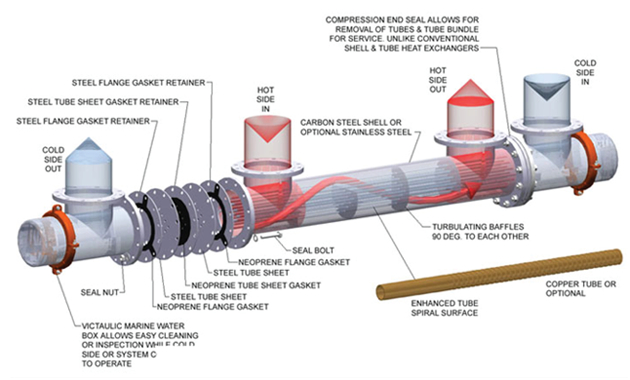Thinking Beyond Plate & Frame Heat Exchangers for Waterside Economizing
/By Chad Edmondson
“What type of heat exchanger is best for my waterside economizer application?”
It’s a question we get asked a lot. With the increased requirement for either an air or waterside economizing in ASHRAE 90.1 – 2010, we expect to get asked even more – especially since the DOE expects states to adopt the revised standard into their non-residential building codes by as early as next month.
U-Factor Versus Real-World-Factor
Conventional engineering logic has always leaned toward plate and frame technology for waterside economizing because of the high heat transfer coefficient, or U-factor of this type equipment. After all, the higher the U-factor, the better the efficiency, and plate and frame heat exchangers can have a U-factor of 1000 or even higher. But does that automatically make plate and frame heat exchangers the best choice for a water economizing application?
The answer depends on how committed facility personnel are to regularly servicing the heat exchanger. A brand new plate & frame heat exchanger may have a high U-factor, but give it several months of continuous operation in an open cooling tower application and its efficiency can deteriorate rapidly without proper cleaning. With as little as .16 inches of clearance between plates fouling, clogging, and sometimes even corrosion can occur. Since opening, cleaning and reassembling a plate exchanger can take up to 24 hours of labor, it’s tempting to postpone the task, which is why so many poorly functioning heat exchangers are taken off-line after a few years of service. (So much for the building owner’s investment in waterside economizing….)
Fortunately, alternatives to this scenario do exist. Inner workings of a high turbulence shell & tube heat exchanger. Photo courtesy of Furlong Industrial Systems, Inc.
High Turbulence Shell & Tube Heat Exchangers
High turbulence shell & tube heat exchangers offer comparable efficiencies to plate & frame heat exchangers without being nearly as susceptible to fouling. This type of heat exchange technology incorporates a counter flow fluid path and specialized baffles to create greater turbulence within the shell. As a result, these types of heat exchangers can cool the hot leaving fluid to within just a couple of degrees of the cold entering fluid in a waterside economizing application. These types of heat exchangers are not only less labor intensive to service, they offer greater design flexibility as well. Multiple heat exchanges can be configured in any number of arrangements to meet the heat exchange requirements within the limitations of a given space.
So….before you commit your client to the maintenance demands of a plate and frame heat exchanger, you might want to explore the latest shell and tube technology. Just ask us. We’ll be happy to get you up to speed.
In the meantime, please check out our webinar on Waterside Economizer Heat Exchanger Sizing and Selection!



